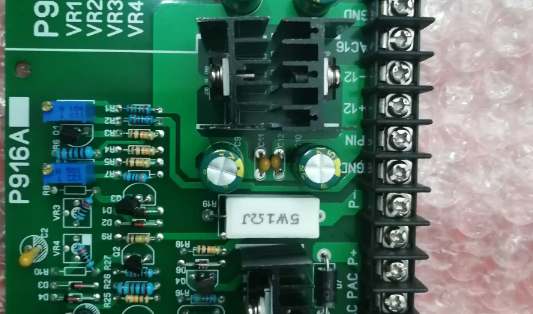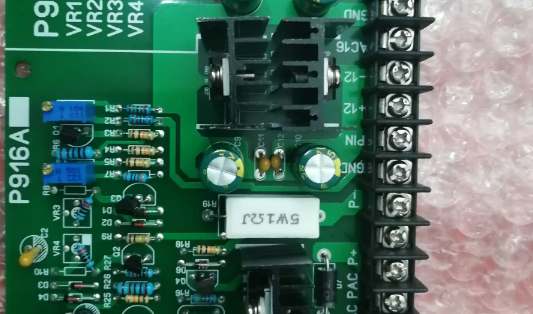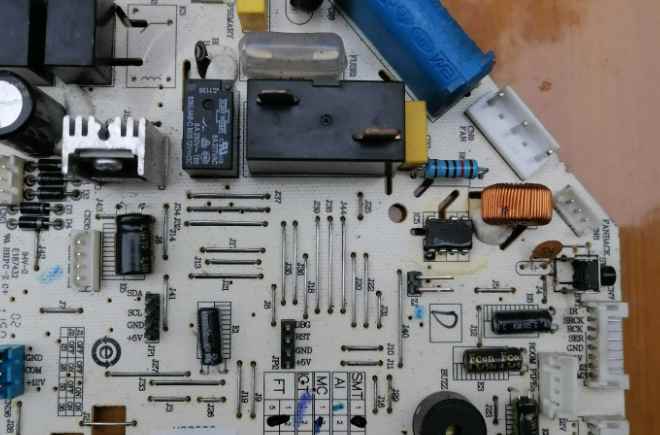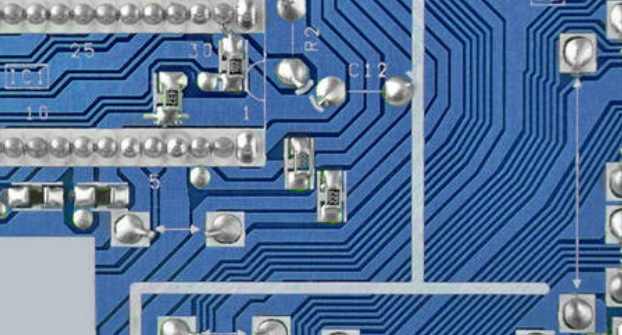
To drill dirt and etching is a rigid-deflection printed circuit board CNC drilling, electroless copper plating or direct copper plating before an important process, in order to achieve reliable electrical connection of rigid-deflection printed circuit board, it must be combined with the special material composition of rigid-deflection printed circuit board, for its main material polyimide and acrylic acid resistance to strong alkaline characteristics, choose the appropriate to drill dirt and etching technology. Rigid torsion printed circuit board to drill dirt and erosion technology is divided into wet technology and dry technology, the following two kinds of technology and peers to discuss together.
Wet drilling and erosion removal technology of rigid flexible printed circuit board consists of the following three steps:
1, swelling (also called swelling treatment). The alcohol ether swelling potion is used to soften the pore wall substrate, destroy the polymer structure, and then increase the surface area that can be oxidized, so as to make its oxidation easy. Generally, butyl carbitol is used to make the pore wall substrate swell.
2. Oxidation. The purpose is to clean the hole wall and adjust the hole wall charge. At present, the domestic tradition uses three ways.
(1) Concentrated sulfuric acid method: Because concentrated sulfuric acid has strong oxidation and water absorption, can carbonize most of the resin and form water-soluble alkyl sulfonates and remove, the reaction formula is as follows: CmH2nOn+H2SO4--mC+nH2O to remove the hole wall resin drilling fouling effect is related to the concentration of concentrated sulfuric acid, treatment time and solution temperature. The concentration of concentrated sulfuric acid used for decontamination shall not be less than 86%, 20 to 40 seconds at room temperature. If cavitation is to be desired, the solution temperature shall be increased appropriately and the treatment time shall be extended. Concentrated sulfuric acid only works on resin, but does not work on glass fiber. After the hole wall is dented by concentrated sulfuric acid, glass fiber head will protrude from the hole wall, so fluoride (such as ammonium hydrogen fluoride or hydrofluoric acid) should be used to treat the hole wall. When fluoride is used to treat the protruding glass fiber head, the process conditions should also be controlled to prevent core absorption caused by over-corrosion of glass fiber. The general process is as follows:
H2SO4:10%
NH4HF2:5-10g/l
Temperature: 30℃ Time: 3-5 minutes
According to this method, after drilling the hard-deflection printed circuit board to drill dirt and erosion, and then the hole for metallization, through metallographic analysis, found that the inner layer of drilling dirt did not completely, resulting in low adhesion between the copper layer and the hole wall, so in the metallographic analysis of thermal stress experiment (288℃, 10±1 seconds), the hole wall copper layer fell off and led to the inner layer of open.
Moreover, ammonium hydrogen fluoride or hydrofluoric acid is extremely toxic, making wastewater treatment difficult. More importantly, polyimide is inert in concentrated sulfuric acid, so this method is not suitable for drilling and erosion of rigid - flexible printed circuit boards.
(2) Chromic acid method: Because chromic acid has strong oxidation and strong erodibility, it can break the long chain of polymer materials in the pore wall, and occur oxidation and sulfonation, and generate more hydrophilic groups on the surface, such as carbonyl (-C=O), hydroxyl (-OH), sulfonic acid (-SO3H), so as to improve its hydrophilicity and adjust the pore wall charge. And achieve the purpose of removing hole wall drilling dirt and concave. The general process formula is as follows:
Chromic anhydride CrO3:400 g/l
Sulfuric acid H2SO4:350 g/l
Temperature: 50-60℃ Time: 10-15min

According to this method, the tough-flexible printed circuit board after drilling dirt and erosion, and then the holes were metallized. The metallographic analysis and thermal stress test of the metallized holes were carried out. The results are in full accord with the standard of GJB962A-32.
Therefore, chromic acid method is also suitable for rigids-flexible printed circuit boards to drill dirt and erosion, for small businesses, the method is really very suitable, simple and easy to operate, more important is the cost, but the only regret of the method is the existence of toxic substances chromium anhydride.
(3) alkaline potassium permanganate method: At present, many PCB manufacturers due to the lack of professional technology, still follow the rigid multi-layer printed circuit board to drill dirt and etching technology - alkaline potassium permanganate technology to deal with rigid - flexible printed circuit board, through this method to remove the resin drilling dirt, at the same time can etch the surface of the resin surface to produce small convex concave uneven pit, in order to improve the hole wall coating and substrate bonding force, In high temperature and high alkali environment, the use of potassium permanganate oxidation to remove swelling resin drilling dirt, the system for the general rigid multilayer board is very effective, but for rigid - flexible printed circuit board is not suitable, because rigid - flexible printed circuit board of the main insulation substrate polyimide is not alkali resistant, in alkaline solution to swelling or even a small part of the solution, not to mention high temperature and high alkali environment. If this method is adopted, even if the rigid-flexible PCB is not scrapped, it will greatly reduce the reliability of the equipment using the rigid-flexible PCB in the future.
3. Neutralize. The substrate after oxidation treatment must be cleaned to prevent pollution of the activation solution after the process, so it must go through the neutralization and reduction process, according to the different oxidation methods choose different neutralization and reduction solutions.
At present, the popular dry method at home and abroad is plasma decontamination and cavitation technology. Plasma is used in the production of rigid-flexible printed circuit boards, which is mainly used to decontaminate the hole wall and modify the hole wall surface. The reaction can be seen as the gas and solid phase chemical reaction between highly activated plasma and pore wall polymer materials and glass fiber. The generated gas products and some unreacted particles are evacuated by vacuum pump, which is a dynamic chemical reaction equilibrium process. According to the rigid printed circuit board used in polymer materials usually choose N2, O2, CF4 gas as the original gas. N2 plays the role of cleaning vacuum and preheating.
The schematic formula of plasma chemical reaction of O2+CF4 gas mixture is:
O2 + CF4O + OF + CO + COF package + + e - + F... The.
【 Plasma 】
Due to the acceleration of electric field, it becomes a highly active particle and collides with O and F particles to produce highly active oxygen free radicals and fluorine free radicals, etc., which react with polymer materials as follows:
[C, H, O, N] + [O+OF+CF3+CO+F+... The CO2 + HF + H2O + NO2 +......
The reaction of plasma with glass fiber is:
SiO2+ [O+OF+CF3+CO+F+...] SiF4 + CO2 + CaL
Thus, the plasma processing of the printed circuit board is realized.
It is worth noting that the carbonylation of O in the atomic state with C-H and C=C increases the polar groups on the polymer bond and improves the hydrophilicity of the polymer surface.
After O2+CF4 plasma treatment, the wettability (hydrophilicity) of hole wall can be improved and the reaction can be removed. After the end of the sediment and reaction incomplete midway product. The results of metallographic analysis and thermal stress test on the metallized holes of the rigids-flexible printed circuit board (PCB) after direct electroplating were carried out by using plasma technology to destain and dent the PCB. The results are in full accord with the standard of GJB962A-32.
To sum up, whether it is dry method or wet method, if suitable method is selected according to the characteristics of the main material of the system, the purpose of drilling and etching of rigid torsion interconnection mother plate can be achieved.






